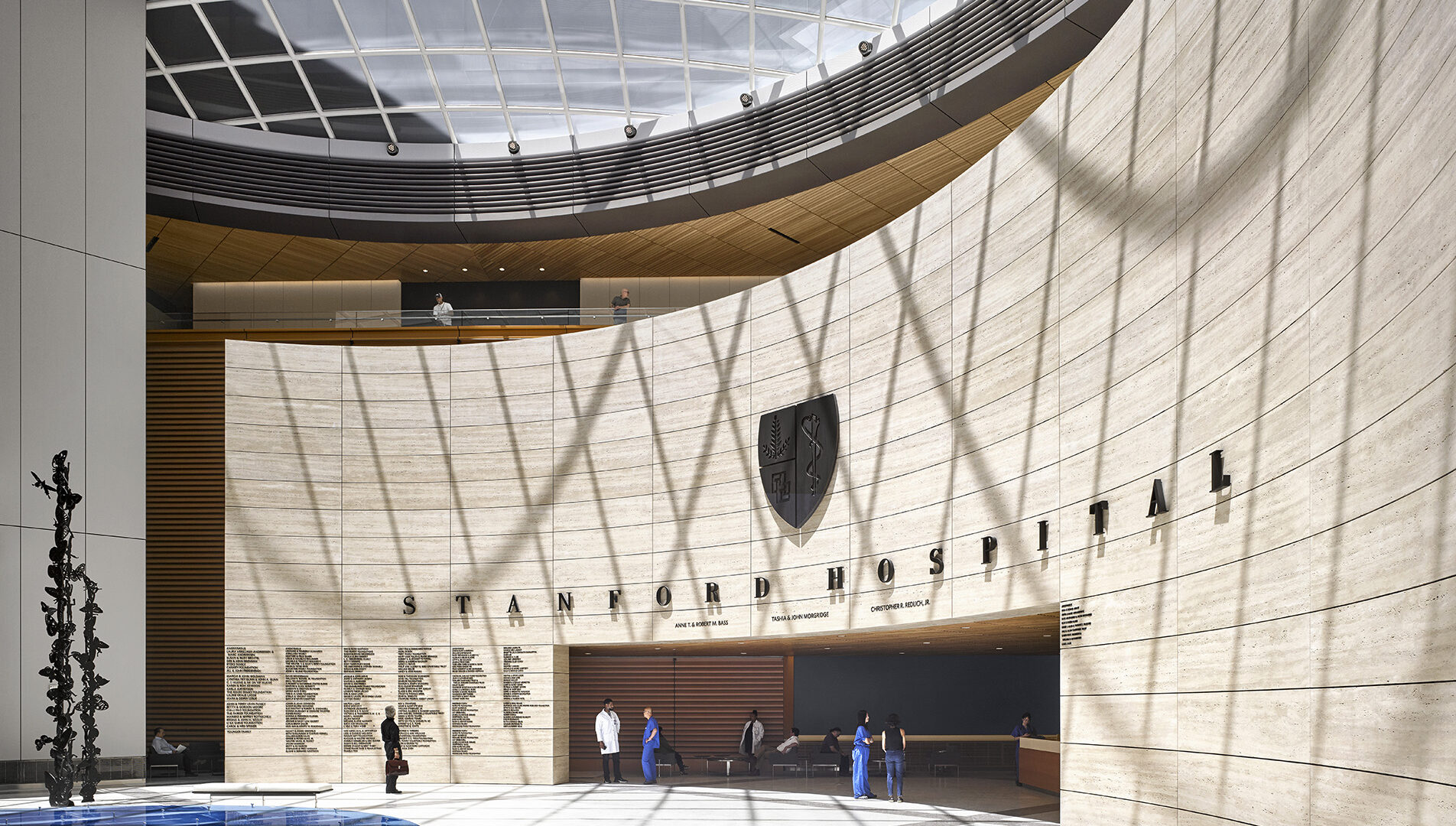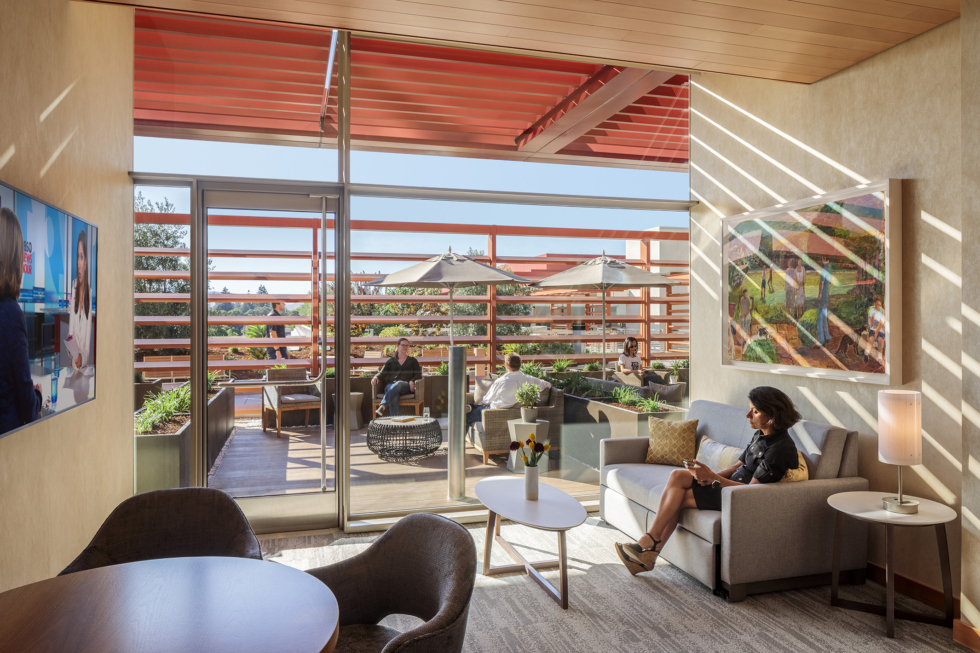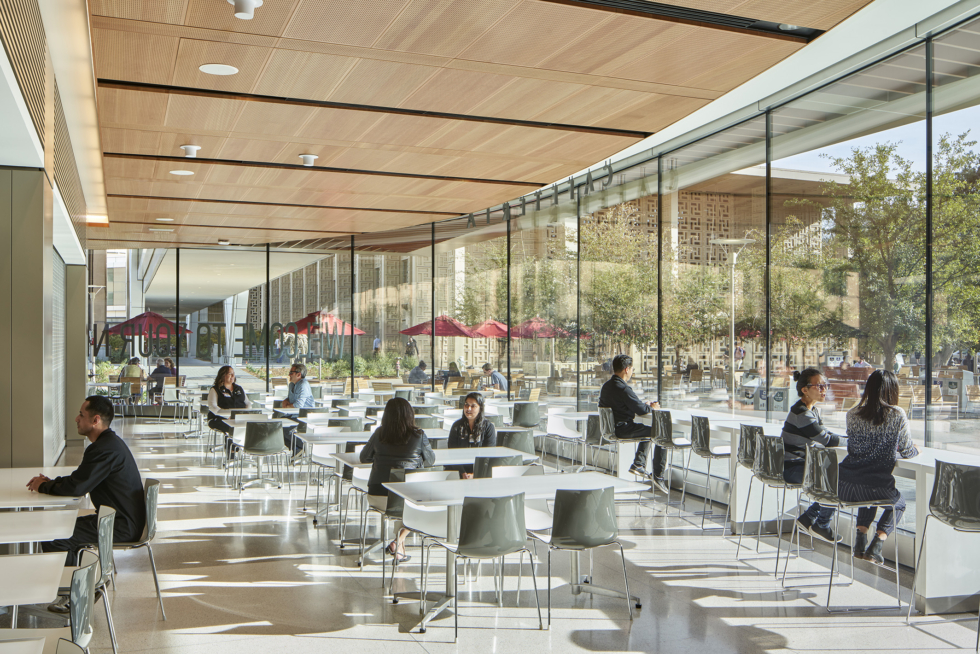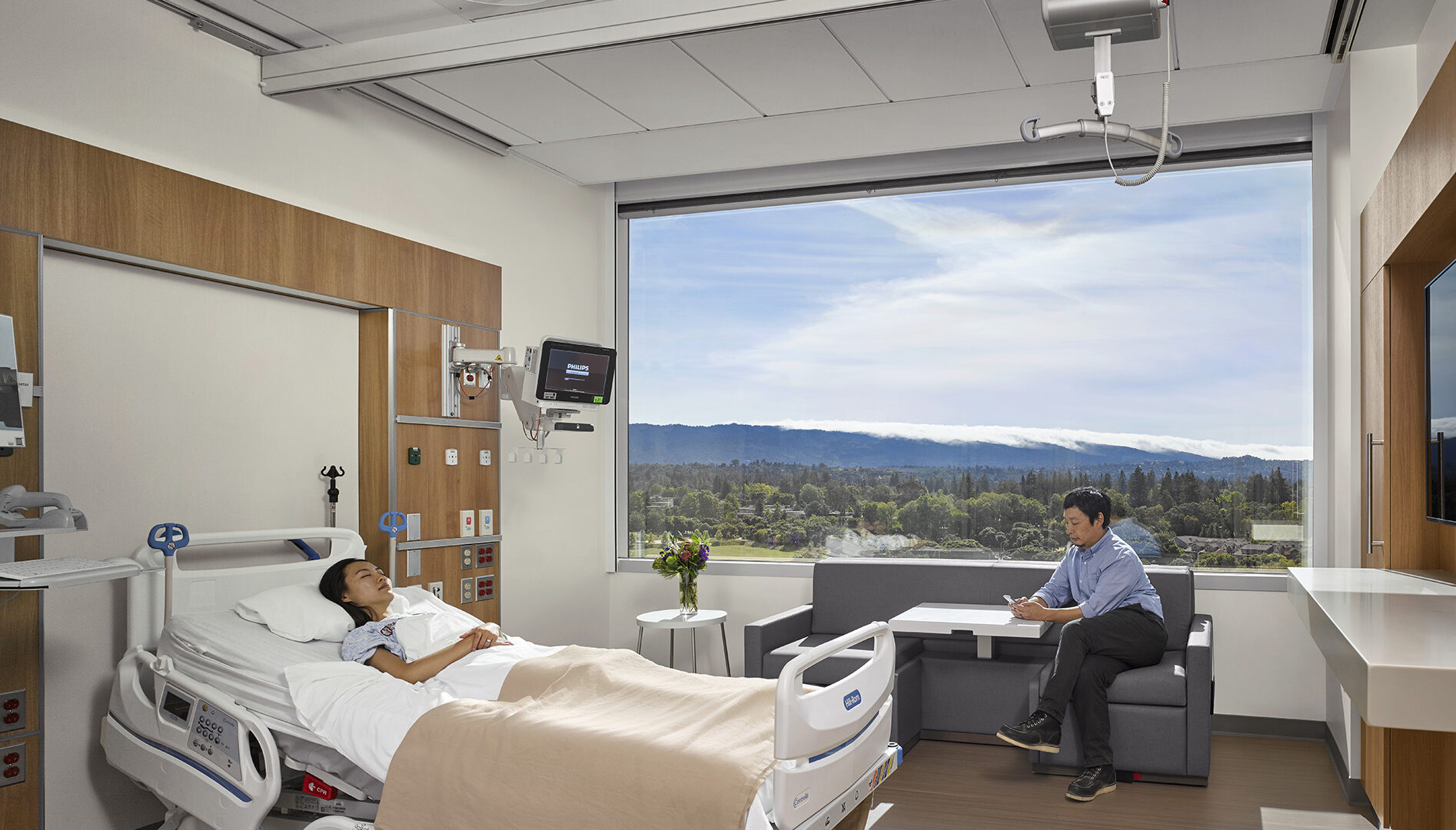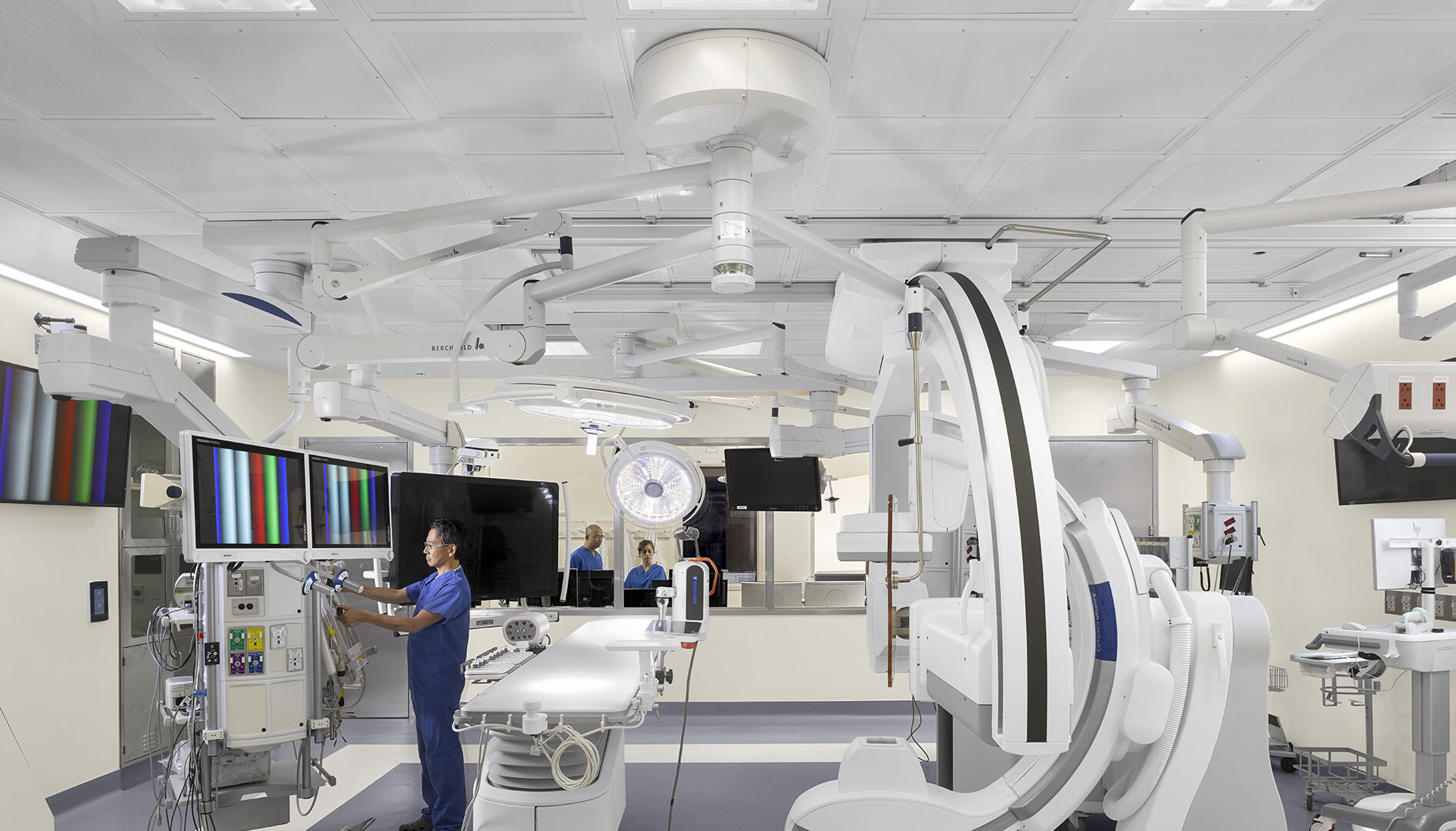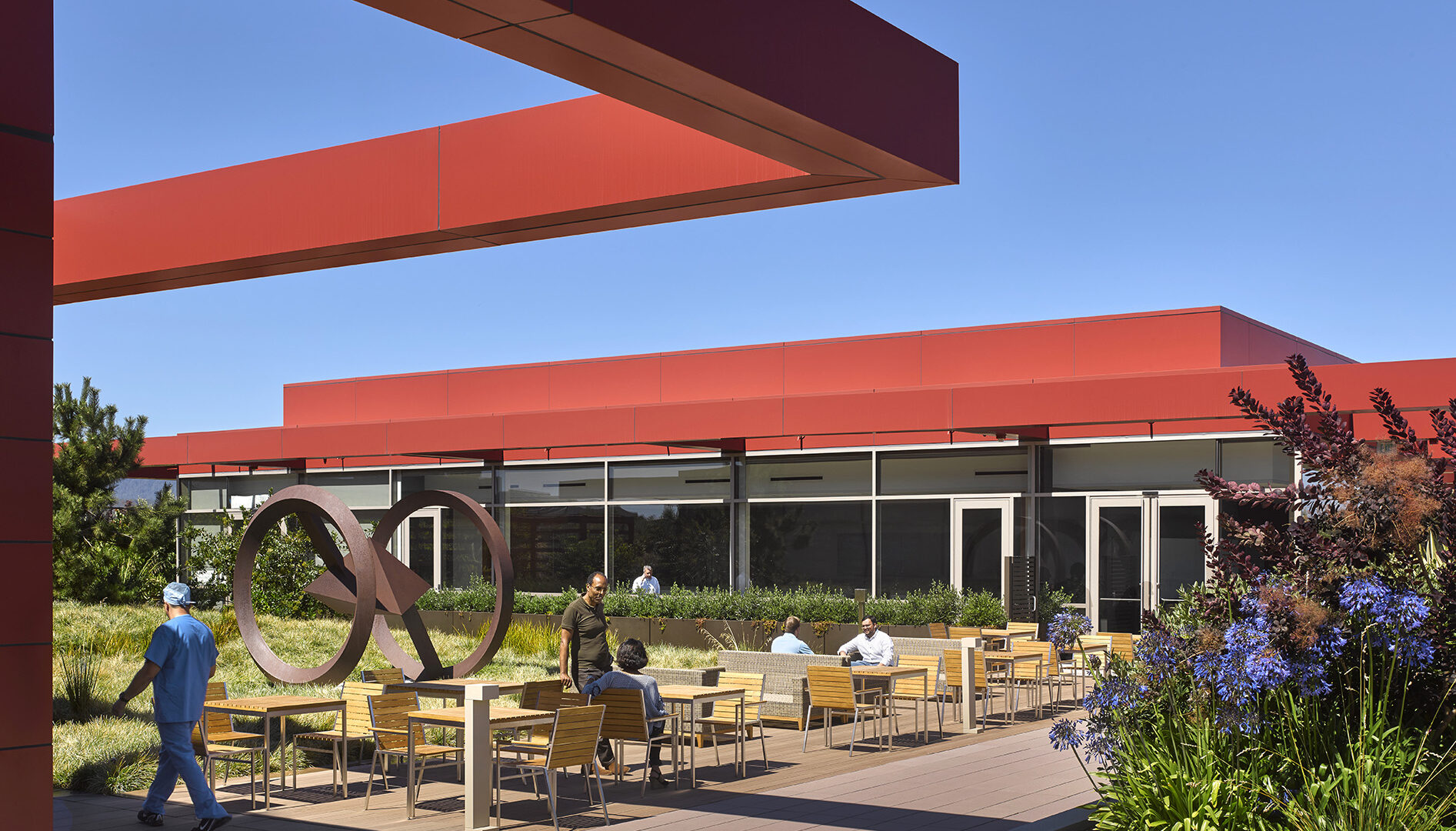Bridging human-centered design and technological innovation, the Stanford Hospital sets a new standard for patient care. Along with executive architect Rafael Viñoly Architects, healthcare architect Perkins Eastman envisioned a biophilic and hospitality-infused building that facilitates connection, effective treatment, and healing. With a modular, resilient design that allows for flexibility and future expansion, the building can be adapted to accommodate the evolving needs of the Stanford community and is capable of withstanding a 500-year seismic event.

Stanford Hospital:
A Case Study
Palo Alto, CA
A cutting-edge healthcare facility and bold vision for the future of medicine promotes patient and staff wellness and signals what’s to come in resilient architecture.
Project Facts
Client:
Stanford Health Care
Size:
824,000 sq. ft.
Sustainability :
LEED Gold Certified
Services:
Sustainability
Practice Areas:
Healthcare
Region:
United States
Studios:
San Francisco
News
Awards
Best Project: Health Care, Regional Best Projects, ENR California (2020)
Finalist, Design Showcase, Healthcare Design (2020)
